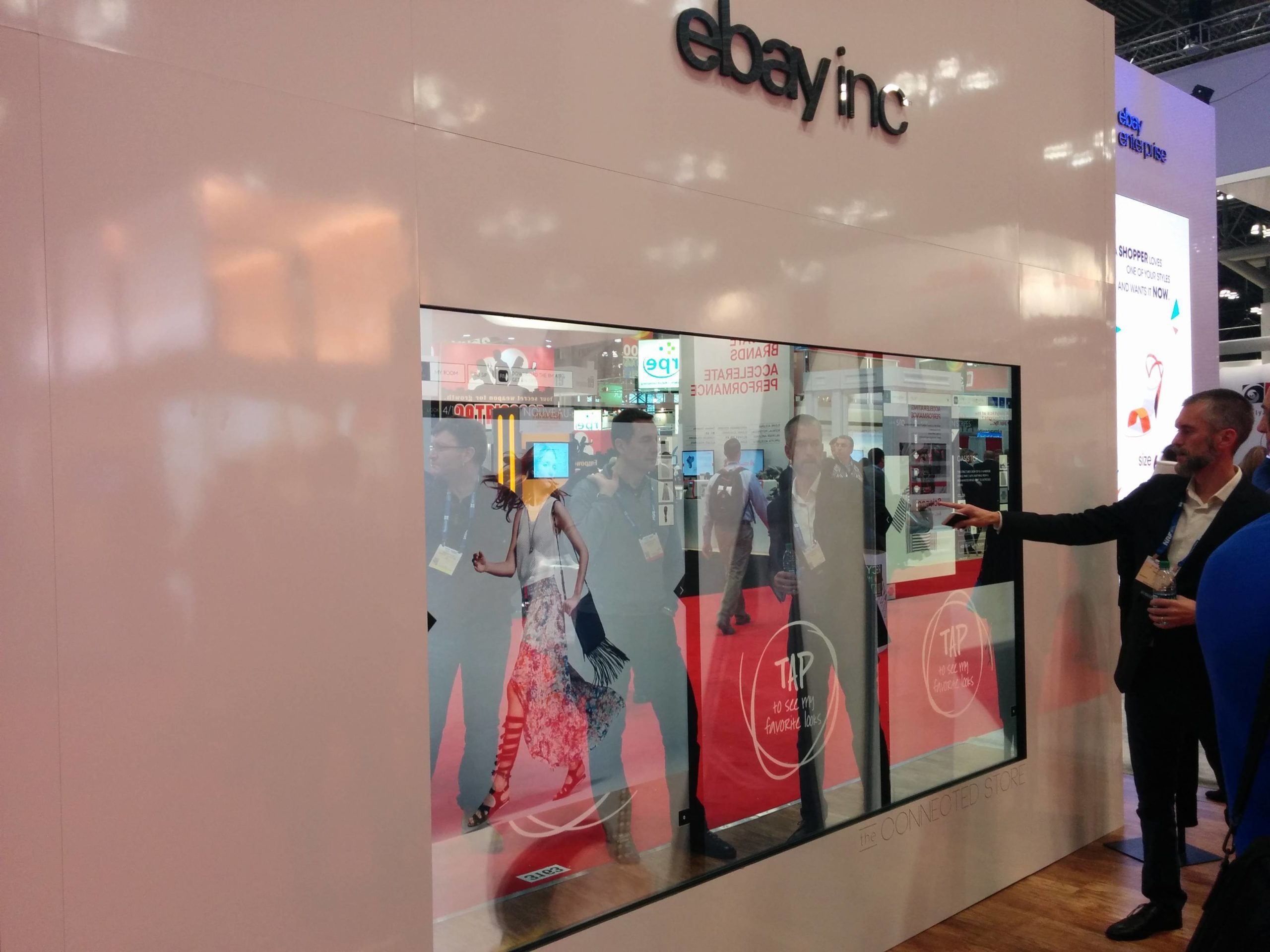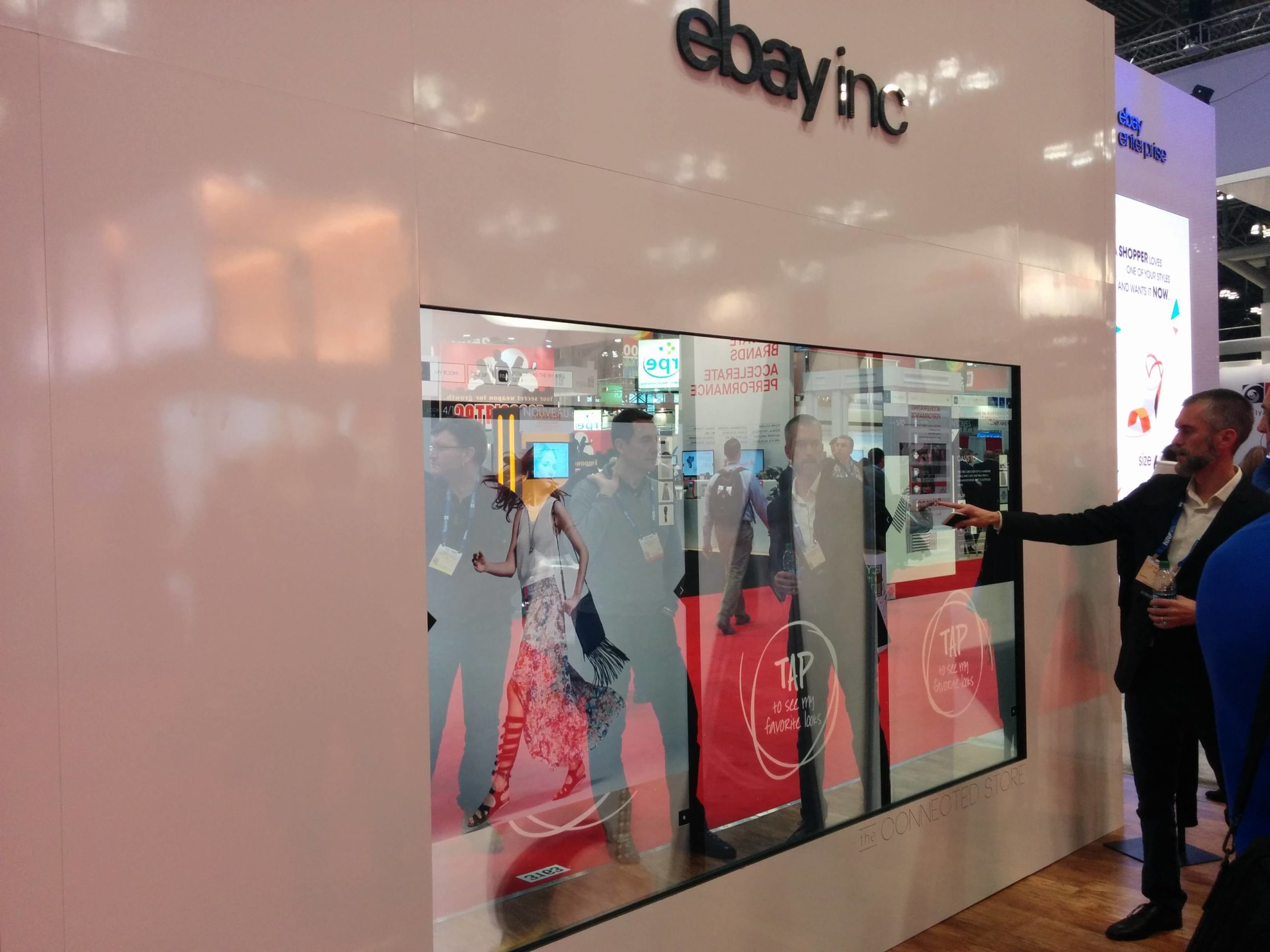
NRF: A Crowded Digital Signage Field Gets Even More Crowded
January 12, 2015 by Dave Haynes

The last time I was at the big National Retail Federation trade show in New York, digital signage was something you saw here and there – in small solo booths or as one of the interesting services wedged into the mega booths of major tech companies.
What struck me, wandering the aisles of NRF 2015 on Sunday, was how much that has changed. In-store digital is now a mainstream activity.
Pretty cool that it’s finally happening. But …
Going mainstream means there’s a LOT of companies doing it – big ones and also smaller ones with established retail relationships based on doing other software and hardware stuff.
This industry already had too many vendors. Now it has yet more.
Consider e-commerce giant eBay, which was showing off at NRF the interactive mirror set-up it has been running in the field with fashion designer/retailer Rebecca Minkoff. It looks great, works well, and was getting lots of attention.
So I asked what’s under the hood, as in are they working with a CMS company. Nope. Built it themselves, out of an innovation team.
I asked how this would work if somebody ordered a pile of these, all over the place, and things got complicated.
Shrug. Good problem to have. That sort of thing. In the context of transactional volume for the main product, in-store digital would indeed be a pretty small job for eBay to keep in control.
For eBay, this product is not a whole pile more than a repackaged extension – using web technology – of the eBay online and mobile marketplaces and user experience.
Now, I’m sure it lacks the complexity and depth of pure digital signage CMS platforms, but I’m not sure the big retail brands are going to know that … or care. This does the business and does it quite well, by the looks of it, and the eBay guy I spoke with said in-store digital was a full business initiative, not a lab project.
I saw other, large e-comm companies showing off their own in-store digital versions of their online and mobile storefronts. I talked to Panasonic and a very large Indian software company you’ve never heard of (Photon) that has written and is marketing through Panasonic a rapid-launch kiosk system, as well as a signage CMS.
Think pre-built WordPress themes that can be endlessly tweaked, and apply that to retail kiosks and info-stations. Instead of $200K (or a lot more) for an agency to build it, these templates have all the data connectors and can be running for five figures. They’re clearly templates, so don’t expect the likes of Nike to take this up, but there’s a vast wash of retail brands that are going to settle for somethiung that’s branded and functional and budget-friendly.
I talked to another company that has for years been doing retail planogram management software, and developed a signage application because clients were asking.
My point here is that it is very hard for whatever you might define as a conventional digital signage CMS company to expand into a new vertical – let’s say point of sale or queue management. But … it’s pretty easy for large companies with lots of resources to get web assets running on screens on a schedule and offering up interactivity.
Again, what they come up may not be all the slick, but if it does the needed job, that may be enough to convince brands to stick with an existing vendor or go with a big vendor they’ve heard of versus some signage company that’s totally unfamiliar.
So what does that mean?
It means more trouble getting noticed and bought if you’re a CMS chasing retail business and what you offer isn’t very distinctive. You need to innovate like crazy.
Yes, lotsa big companies like Cisco and Intel and HP have come into digital signage and not done all that much. The difference now is that they’re not competing so much with so-so software and gear. Guys like eBay are just extending already rock-solid web products.



Leave a comment